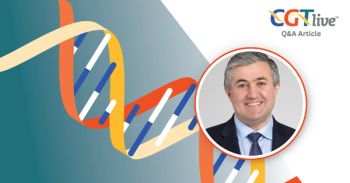
Engineered 'Micro-Pharmacies' in CAR T Cells May Help Combat B-Cell Lymphomas
It turns out that CAR T cells can do more than directly attack cancer cells. They can be used as “micro-pharmacies” for precise therapeutic delivery in B-cell lymphomas.
Recent successes have generated excitement about immunotherapy and the use of genetically engineered chimeric antigen receptor (CAR) T cells. Now, it turns out that CAR T cells can do more than directly attack cancer cells. They can be used as “micro-pharmacies” for precise therapeutic delivery in B-cell lymphomas.
This study was
Hans-Guido Wendel, MD, of Memorial Sloan Kettering Cancer Center, New York, New York, and collaborator Karin Tarte of the University of Rennes, France,
The investigators report this work both defines a critical lesion that leads to lymphoma development and identifies a potential new treatment modality.
The team identified, for the first time, a critical pathway that is disrupted in approximately 75% of human follicular lymphoma (a subset of B-cell lymphoma). The HVEM (herpesvirus entry mediator) receptor gene is mutated in approximately 50% of cases. These mutations disrupt the interaction with an inhibitory receptor called BTLA, leading to lymphoma growth and a supportive microenvironment niche.
Wendel et al., report there are key molecules in the pathway that are accessible to therapeutic attack. They developed strategies to restore HVEM function by delivering the HVEM protein directly to lymphomas through an engineered CD19-directed CAR T cell in vivo. This cell was specifically designed to continuously produce the soluble HVEM protein locally. Serving as a so-called micro-pharmacy, these CAR T cells deliver this anticancer protein directly to the tumor site by seeking out CD19-expressing B cells. Testing of these micro-pharmacies in animal models produced significant therapeutic responses that were more effective than control CAR T cells and CD19 CAR T cells.
The findings illustrate a new way to repair the tumor suppressive HVEM-BTLA interaction and put the brakes back on lymphoma cells. In addition, this study further shows that CAR T cells can do more than directly attack cancer cells. This is expected to increase on-target therapeutic activity and also reduce exposure of normal tissues, and thus unwanted side effects of cancer therapy.
The finding that the interaction between HVEM and BTLA is lost in most follicular lymphomas may pave the way for attacking lymphoma in a unique way. There is a great unmet clinical need and so there it is hoped that clinical trials can begin soon. The researchers believe that additional studies are warranted to explore the use of engineered immune cells as a platform to deliver antitumor agents.
“We devised a strategy to bring HVEM back to lymphomas using CAR T cells as living 'micro-pharmacies' that locally and continuously make this tumor suppressive protein. It is not easy to say when this experimental strategy will be ready for the clinic,” Dr. Wendel told OncoTherapy Network.
Newsletter
Stay at the forefront of cutting-edge science with CGT—your direct line to expert insights, breakthrough data, and real-time coverage of the latest advancements in cell and gene therapy.
















































